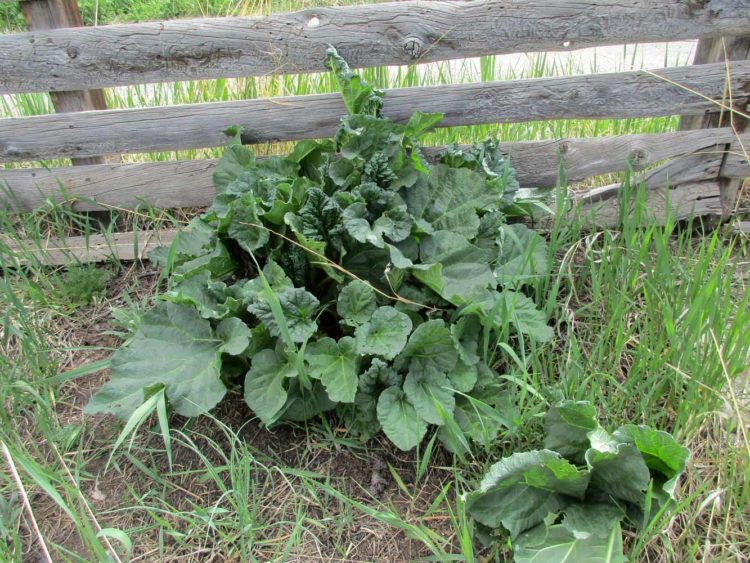
I love my Old West town for many reasons, and one of them is rhubarb (Rheum spp.). It is one of the few food plants that can be cultivated here up high where I live, due to our extremely short growing season and cold nights. I’m hardly the first to discover this, for the rhubarb plants that dot my town and neighboring Alma, Colorado grow in profusion on nearly all the historic properties, planted by some long-ago hand and persisting to this day.
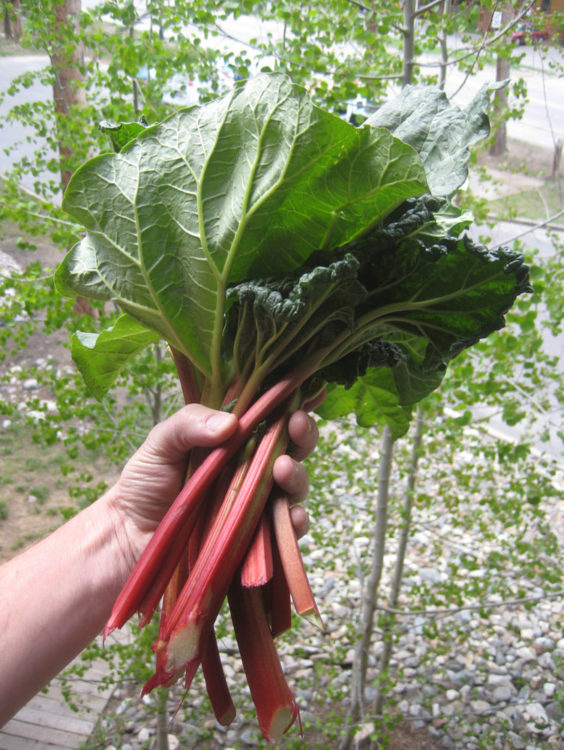
Many folks up here do not use their rhubarb; you’d be surprised how many do not even know what it is. It’s not a “wild” plant in North America—but it is a forgotten, if not feral, plant that makes a nice addition to a forager’s fare.
Mounds of rhubarb are easy enough to spot from afar because of their huge, heart-shaped to triangular, ruffled leaves. The leaves are not edible, but digging inside you find the thick leaf stalks (petioles) that range in color from glossy red to light green with ruby bases. They have a tart flavor and are often prepared cooked with copious amounts of sugar in pies and other desserts—earning rhubarb the nickname “pie plant,” a term popular in 19th century cookbooks. Rhubarb wine has been another well-loved preparation here in the high country.
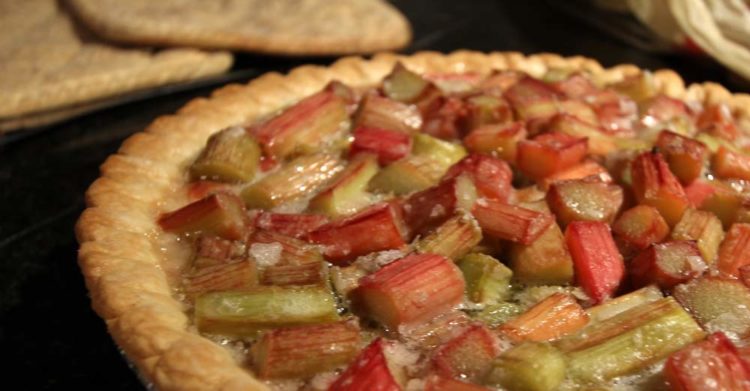
Like other members of the Polygonaceae family—such as curly dock and other docks of the genus Rumex—rhubarb produces stalks with clusters of small flowers. The flower stalks, which are generally cut off in a managed patch in order to promote food production, tower tall above the leaves, making the plants all the easier to spot, even after they’ve dried out.
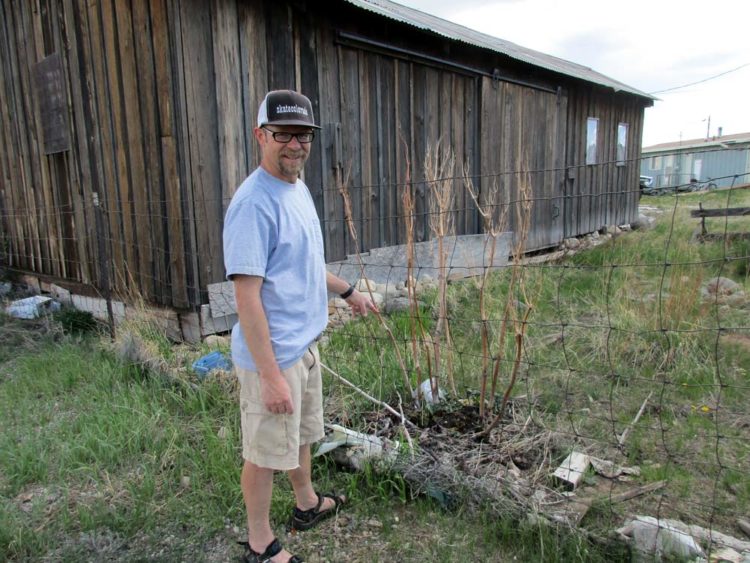
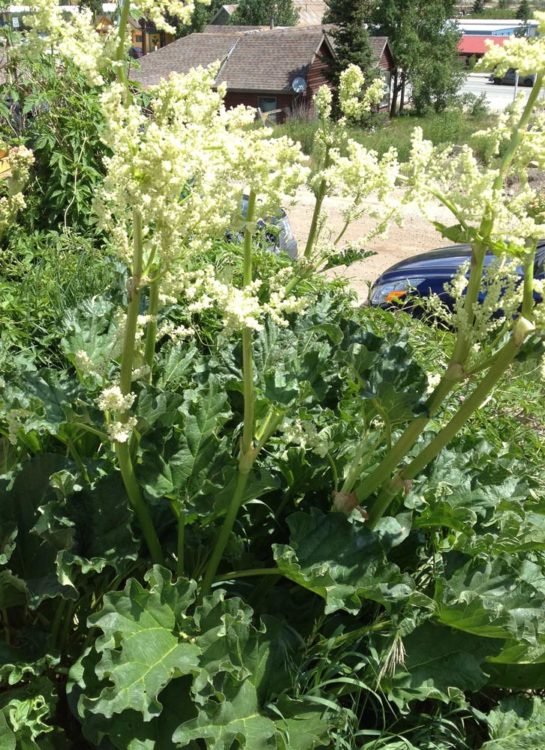
Lookalikes include burdocks of the genus Arctium, whose leaves are woolly and not smooth like those of rhubarb. Burdocks produce thistle-like round flower heads and the characteristic burs that detach from the plant and reattach to your clothing. I’ve never seen burdock at my altitude. Our large, edible docks might also be mistaken for rhubarb. However, dock petioles are generally thinner, and the red, if present, is less pronounced. That is, except for canaigre dock (Rumex hymenosepalus), a desert-dweller whose petioles can get quite red–and have, in fact, been used as a rhubarb substitute under the name “desert rhubarb,” though I have yet to try them. Green Deane writes that alpine dock (Rumex alpinus) can also be used in this way.
One of my favorite pastimes is to bike around town, spotting for unused rhubarb plants. Asking property owners permission to forage turns out to be a great way to make friends. A realtor in town invited me to cut rhubarb from her property the other day, and an old-timer from Alma has invited me to check out his collection of historic recipes, penned by previous generations of his family and friends.
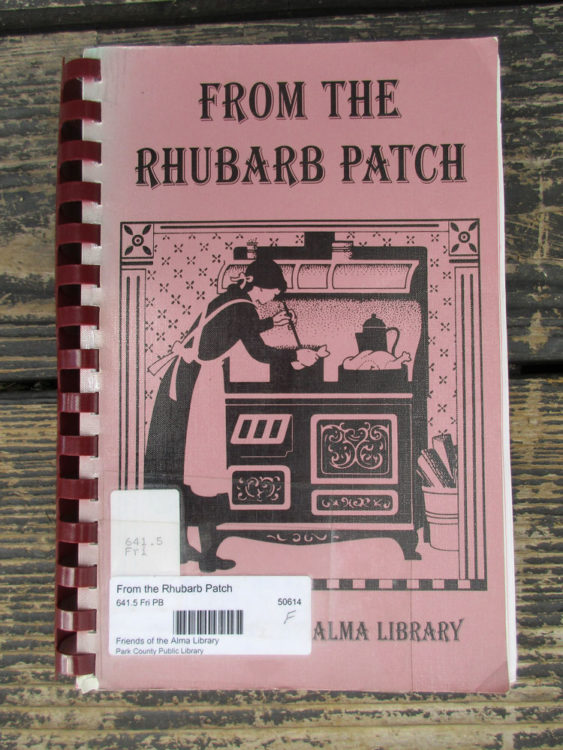
For starters he sent me to the library for a book, From the Rhubarb Patch, a collection of recipes put together by Friends of the Alma Library. I’ve made my share of requisite rhubarb pies, which are both simple to make and delicious to eat. But this book has expanded my repertoire, most recently to punch.
There are several rhubarb punch recipes in the book, but the one I followed, with slight adaptations, involved cooking rhubarb down with water and sugar, blending it into a thin sauce, and combining that in spoonfuls with soda water and a fruit juice. I used orange, but other options include lemon, pineapple, grape, and ginger. It makes a thick punch that needs to be stirred each time before pouring, and gets a frothy head on top.
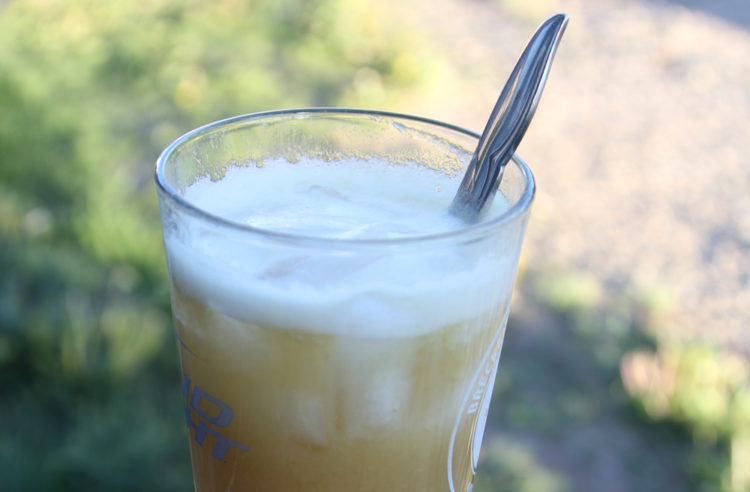
I’ve been happily drinking rhubarb punch with dinner, but the other night at a neighbor’s house we added rum to good effect, and I was tickled they wanted to keep what was left of it. Plus it earned me an invitation to forage some of the lush, beautiful rhubarb growing alongside an outbuilding on their historic property. And so it goes.
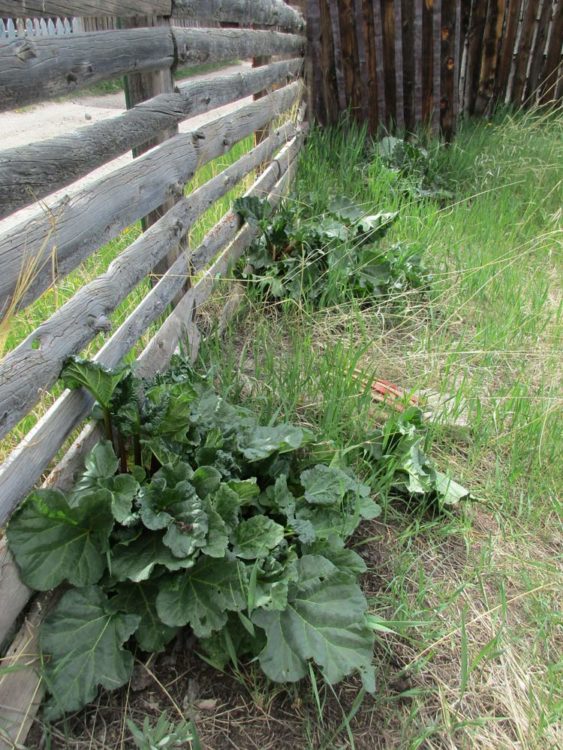
Rhubarb leaf stalks can be harvested with a gentle twist-and-tug or cut low down by the base with a knife, aiming for the longer, thicker ones and leaving plenty behind for the plant. My friend Butter has taught me to cut off the leaves while I harvest, and then mulch the same plants with them. Experts recommend leaving rhubarb alone so it can replenish its resources after harvest period, which in some areas of the country is May but here at 10,000 feet is June. Plants with thin stalks should be left to grow more robust, withholding harvest for a future year.
I transplanted some historic rhubarb to my property two autumns ago, before a chicken coop occupied the spot where it once was. I absolutely relish the idea that somewhere, separated by time, I am connected to someone through that historic rhubarb, which now finds a home with me.
Updated 2.22.21
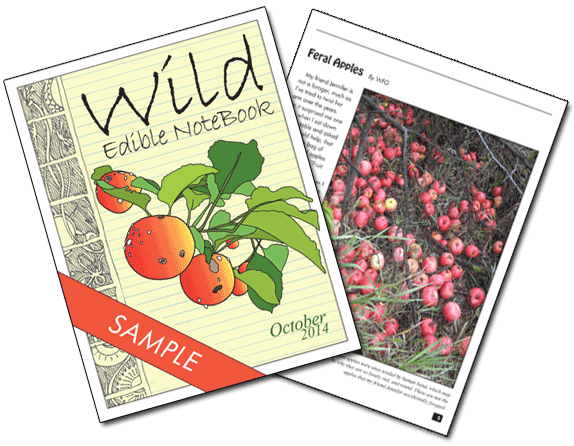
Hey, I live in Nova Scotia and I grew up eating Rhubarb. My husbands Acadian grandmother used to make rhubarb pie and add bacon to it. Everyone who tries it loves it 🙂 its a great sweet, tart, salty flavour.
Also you can juice it and then use it in place of lemons for a lemonade or rhubarbade
That sounds wonderful, thank you for the idea!
I grew up in upper Michigan and every year behind our garage was a fairly large patch of rhubarb. I could hardly wait for it to get ripe . U would bite into to it and make such a face but would not stop eating it . My Grandmother always wanted us to pick a big bundle of it to make pies with and can some up for later use . Wow now that really brings back some old good family memories. My Father passed away a couple of years ago and we went up there for his funeral and I went bye our old house and asked the people living there now if it was still growing back there and they told me Yes and they enjoy every year it rippens also. Almost brought me to tears . That patch of rhubarb has been growing and feed people for over 80 years now . And I hope it never stops making memories.
Thank you so much for sharing this beautiful story.
Yes, Rhubarb! Such a history. It grows great in North Dakota; I try to fertilize with offerings from my close neighbors’ cows, every couple of years. My 8 plants have grown into an umbrella effect with their leaves so that the ground is totally shaded. I love to make sauce with some honey and cinnamon, just cooking it down slowly in a crock pot before adding the sweetener. Sooo wonderful on vanilla ice cream or cottage cheese or yogurt.
Hi
Fantastic information on the rhubarb. I live in the UK. Is it possible to get the seeds of some of these American rhubarb varieties?
Gosh I’m sure there is but I’m not sure where to point you. Does anyone else have a suggestion?